#way down yonder in the pawpaw patch
Explore tagged Tumblr posts
Text
I'm always looking at the pawpaw trees when I'm out wandering in the woods in summer, because I think they're neat and I want free fruit. But though they bloom and there are certainly many that are large enough to bear fruit, I never see any fruit on them. I suspect this is because each patch, a clonal group, is too isolated for them to effectively cross-pollinate.
But today, I was looking up at some and!

There you are, you weird tropical-tasting, mammoth-missing fruits!

I'm coming back for you in the fall.


#they're not small - hard to miss if they're there & you're looking#idk how i'm going to reach them tho#i'll bring a long stick and basket#maybe it's just a good pawpaw year?#i'll have to go check the others#pawpaws#asimina#asimina triloba#native plants#native fruits#edible plants#way down yonder in the pawpaw patch
25 notes
·
View notes
Text
where oh where is pretty little susie where oh where is pretty little susie where oh where is pretty little susie way down yonder in the pawpaw patch. pickin up pawpaws puttin em in her pockets pickin up pawpaws puttin em in her pockets pickin up pawpaws puttin em in her pockets way down yonder in the pawpaw patch. come on boys lets go and find her come on boys lets go and find her come on boys lets go and find her way down yonder in the pawpaw patch. pickin up pawpaws puttin em in our pockets pickin up pawpaws puttin em in our pockets pickin up pawpaws puttin em in our pockets way down yonder in the pawpaw patch
2 notes
·
View notes
Text
Discover the surprising health benefits of the Pawpaw
Way down yonder in the pawpaw patch…Incorporating pawpaw into your diet can enhance health and introduce a delicious, nutrient-packed superfood to a wider audience. Fight Censorship and Help Spread Mockingbird Non-Compliant News! Like, Share, Re-Post, and Subscribe! There’s a lot more to see at our main page, Dixie Drudge View Source The pawpaw (Asimina triloba), often referred to as “poor…
0 notes
Text

I have spent the last three years suffering in the grip of a madness that only takes hold of me during the first half of September. An obsession. A purpose. A driving force to my life.

I only learned about pawpaws three years ago, and every September since then, I have gone rabid trying to find just one pawpaw.
I'd heard pawpaws mentioned growing up (in old-timey books, in that one kid's song that has the chorus "way down yonder in the pawpaw patch," in the Disney song The Bare Necessities), but I had always assumed that "pawpaw" was old-timey slang for like...melons, or something.

Things I learned over the past three years while trying to find a pawpaw: Sometimes specialty stores have them, but only for a week or two. You can't order them online. There's a pawpaw orchard two states away. Some pawpaw trees grow somewhere along a river near me, but the website can't tell you where because pawpaw foragers like to keep their spots secret. A farmer's market north of me had a pawpaw festival two years ago. The farmer's market is closed now. Pawpaw puree was used in a fancy dessert at an expensive restaurant in the nearby city. The restaurant is closed now. There are three pawpaw trees in a city park an hour away from me, but there's no guarantee they will have fruit. There's a grocery co-op near me that had pawpaws two years ago for a few weeks.
This year, I looked at the grocery co-op's website. I found their facebook page. I found the facebook page for their farm market store that they only open on Saturday mornings. They were selling a limited number of pawpaws this Saturday.
On Saturday, I got up early to drive 45 minutes to a farm market store to buy one (1) fruit.
Since I am also one (1) fruit (and I'd finally remembered where I put my Transtape), I was wearing my shirt halfway unbuttoned because I have a deep all-consuming desire to be the sexiest motherfucker at the farmer's market. This lasted right up until I saw the friendly older lady sitting at the register, because I also have a deep all-consuming desire to be Such A Nice Young Man.

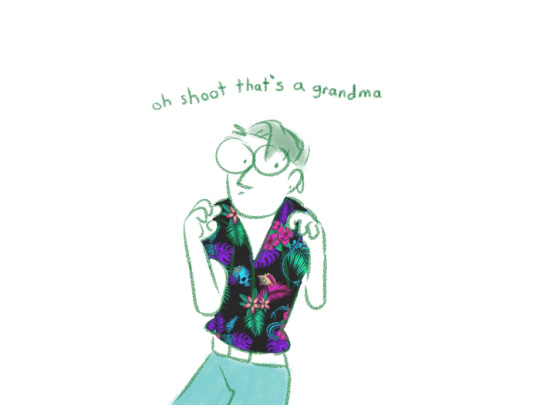

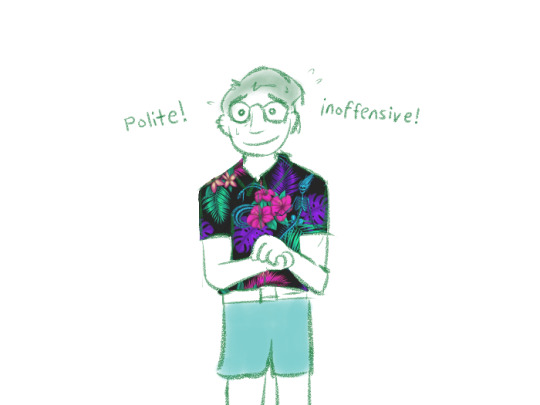
The farm store was about the size of half a bedroom, and everything was too expensive, but they had pawpaws. A woman who was restocking helped me find the ripest ones. Finally, I had the object of my desire in my sweaty grasp.
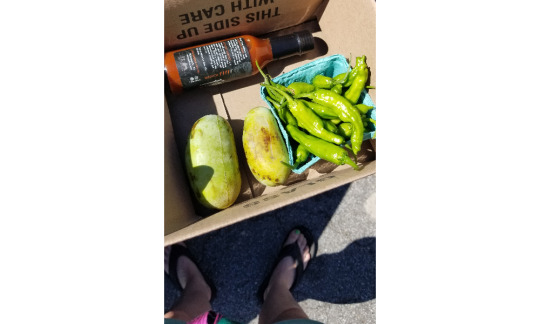
(I also got shisito peppers and hot sauce because that's my favorite summer snack)
Since pawpaws are supposed to be kind of messy to eat, I decided against doing the taste test in the car. On the way home, I was sidetracked by a local festival that was apparently happening in my town, which I wasn't aware of until I almost drove through it, and which I ended up spending the rest of my spare cash at.
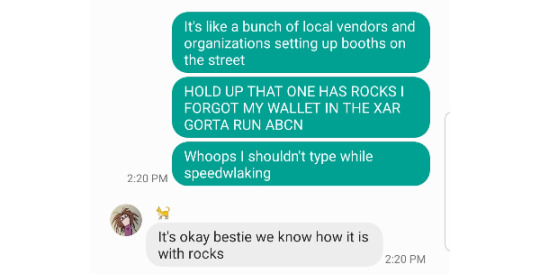
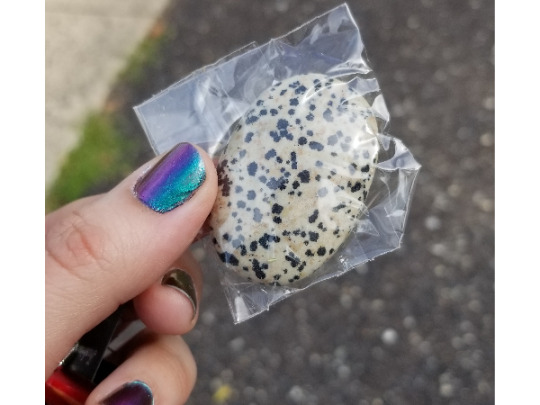
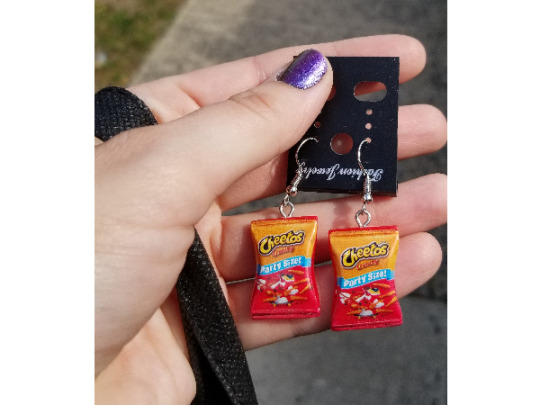
(worth it)
Finally, though, I was home, and I was hungry.

I had no idea how to open them, so I tried cutting one in half with a knife, and then the knife got stuck on the giant-ass seeds. Intoxicated with fruit lust, I just tore it open the rest of the way with my bare hands.

Pawpaws have a texture kind of like bananas, but tougher and chewier around the seeds. They're not bad! I have experienced the pawpaw, friends. May you, one day, experience the pawpaw too.
(thanks to @purpledemoncat and @noirandchocolate for letting me post bits of our text convo)
#pawpaws#pawpaw#personal stuff#my doodles#I want to illegally download a pawpaw tree so I'm keeping the seeds in my fridge for now#I like illustrating these lil' things about my life. Like a combo diary-scrapbook-sketchbook-blog.
78 notes
·
View notes
Text
It's very simple, one of my cats (Sweet Little Larry) is to be found way down yonder in the pawpaw patch, and the other one (Squirrel Nut Muffin Man) lives in Purry Lane.
1 note
·
View note
Photo

Love this time of year, pawpaw season! A wonderful native fruit, the pawpaw, Asimina triloba, is packed with nutrients, but be careful! It’s also a laxative, especially if you’re not used to eating them!
Pawpaws are one of several “witch trees,” said to be homes to spirits of the wandering dead. Pawpaw seeds are often used to “lay” or calm spirits.
For the longest time pawpaws were one of the only fruits Ozark hillfolk could gather. This was long before there were any apple orchards or peach trees, and the plums were of the wild variety which make a tasty jelly but are mostly pit and worm in my experience. Pawpaws became integrally linked with the Ozark people.
I can remember stories from both my grandpa’s about gathering up pawpaws to eat, and my mom always talks about how annoying it was to clean up smooshed pawpaw residue from off the driveway at her dad’s body shop. I can remember even singing the pawpaw rhyme, although I can only ever recall the one line “Pickin’ up pawpaws, puttin’ ’em in your pockets, way down yonder in the pawpaw patch.” The full song goes something like this: Where, oh where, oh where is Susie? Where, oh where, oh where is Susie? Where, oh where, oh where is Susie? Way down yonder in the paw-paw patch. Come on, kids, let’s go find her, Come on, kids, let’s go find her, Come on, kids, let’s go find her, Way down yonder in the paw-paw patch. Pickin’ up paw-paws, puttin’ ’em in your pockets, Pickin’ up paw-paws, puttin’ ’em in your pockets, Pickin’ up paw-paws, puttin’ ’em in your pockets, Way down yonder in the paw-paw patch. I’m usually able to find a few pawpaws to eat every season. There has been a swift decrease in pawpaw trees in the Ozarks over the years due to deforestation, but recently there’s been an effort among naturalists to help get the tree reestablished. Much like with the chinquapin trees, I think there’s even a registry where you can list the pawpaw trees that you’re growing. Usually you want to wait for them to fall out of the tree, a sure way of knowing they’re ripe. But you don’t want to wait too long or the squirrels and insects will have claimed them as their own.
I like to eat them raw, but have also baked them into a cake. Here’s the recipe I used from the North Caroline Folklife Institute:
Pawpaw Pudding: 2 c. sugar 1½ c. bread flour 1 tsp. baking powder ½ tsp. cinnamon 3 eggs 2 c. pawpaw pulp 1½ c. milk ½ c. melted butter Preheat the oven to 350 F, and grease a 13x9x2-inch glass baking dish. In the center of a large mixing bowl, whisk together the dry ingredients: sugar, flour, baking powder, and cinnamon. Into a well in the center of the dry ingredients, add and whisk the eggs. Whisk until fully mixed. Whisk and mix in the other wet ingredients: pulp, milk, and butter. Pour and scrape the batter into the baking dish and bake 50 minutes. To test for doneness, slide a toothpick into the center of the pudding, and it should come out clean. Like custard, if you jiggle the pan, the center should be set. Serving: Cut the pudding into squares, and serve it with vanilla ice cream, whipped cream, hard sauce, or crème anglaise. The entire pawpaw tree has also made its way into Ozark folklore and magic. Here are some tidbits from Vance Randolph’s Ozark Magic and Folklore: “The pawpaw tree is well known to be connected with witchcraft and devil worship, and even a gray-and-black butterfly (Papilio ajax) is looked upon as ‘strange’ because it is so often seen fluttering about pawpaw trees. People near Goodman, Missouri, tell me that there is some direct connection between pawpaw trees and malaria, but just what this relation is I don’t know. Pawpaws are becoming rare in many sections where they were formerly abundant; this is regarded by the old-timers as a bad omen, perhaps a sign that the end of the world is at hand.” “There are many ways of detecting a witch, such as hiding a Bible in her mattress, placing a broomstick in her path, scratching a little cross under the seat of her chair, or adding a bit of pawpaw bark to her tobacco. Any of these measures will make a witch deathly sick, while an innocent woman is not affected. Another method is to take a new awl and fix it in the seat of a chair, so that only a very little of the point sticks through. Then get the suspected woman to sit down in the chair. If she jumps and cries out, it means that she is not a witch, since a witch doesn’t feel the sharp point at all.” “Some of the old-timers drive three nails into the outside of a door, in the form of a triangle, to keep witches away from the cabin; one man told me that the three nails represent the Father, the Son, and the Holy Ghost and were particularly efficacious in protecting an expectant mother from the powers of evil. Painting the outside of a door blue is said to be a sensible precaution also, and some people make doubly sure by driving several tiny pegs of pawpaw wood into the doorsill.” “If it is possible to obtain any part of the witch’s body such as fingernail parings, a lock of hair, a tooth, or even a cloth with some of her blood upon it the witch doctor has recourse to another method. Out in the woods at midnight he bores a hole in the fork of a pawpaw tree, and drives a wooden peg into the hole. Once, despite the protests of a superstitious hillman who was with me, I pulled out one of these pegs and examined it. The end was covered with beeswax, in which several long hairs were imbedded. There was a circle of what appeared to be dried blood higher up on the peg, and the auger hole contained a quantity of fine sand. A similar ‘pawpaw conjure’ is sometimes employed by cuckold husbands, but it is primarily intended to deal with women who ‘talk the Devil’s language.'” “The relatives of a murdered man sometimes throw pawpaw seeds into the grave, on top of the coffin. It is said that this insures that the murderer will be punished. Other old-timers, in similar case, prefer to pull down the top of a little cedar tree and fasten it with a big stone. This somehow helps to catch the murderer. As soon as the man is punished, somebody must hurry out and move the stone; if the cedar is not released there’ll be another killing in the neighborhood.” “Many farmers say that it is a good idea to bury a bit of a cow’s afterbirth under a pawpaw tree, as this will cause her to bring forth female calves thereafter.” “In rural Arkansas the backwoods girls tie little pieces of cloth to the branches of certain trees usually pawpaw or hawthorn, sometimes redbud or ironwood. I have seen five of these little bundles in a single pawpaw tree. I have untied several and examined them carefully; there was nothing in them that I could see, just little pieces of cloth, doubtless torn from old dresses or petticoats. The natives say they are love charms, but just how they work I do not know. No woodsman that I have ever known would think of touching one of these objects, and I have often been warned that it is very bad luck to ‘monkey with such as that.'”
#ozarks#traditional witchcraft#folk magic#folklore#Ozark Folklore#ozark folk magic#ozark folkways#ozark folk medicine#traditional healing#traditional medicine#pawpaw#foraging#ozark healing traditions
73 notes
·
View notes
Text
Sept. 11, 2019: Columns
A forgotten father-in-law

The grave marker for Albert L. Hamby in the cemetery of Stony Hill Baptist Church in Purlear
By KEN WELBORN
Record Publisher
Anyone who reads this space knows I like to write about mother-in-laws.
For a guy who has managed to get married every time he turns around, I have lots to choose from.
Father-in-laws, however, are another matter entirely. My relationship with them all was good to downright wonderful. I have often written stories about my favorite father-in-law, Dr. William L. Bundy. He is the one with whom, I by far, spent the most time, both during my stint with his daughter, and thereafter—when he would make me feel good by still introducing me as, "Kenneth, my son-in-law."
But today, I want to talk about my first father-in-law, Albert Hamby. Al for short.
Yes, the husband of my famous mother-in-law of the family reunion/burning hot dogs.
Albert was born in1916 in the Purlear area of Wilkes. While his education was very limited, Al had a talent for sizing up a stand of timber like no other, and made a good living doing just that. He was a World War II Army veteran who was on the beaches of Normandy on June 6, 1944. While he was pretty closed mouth about the war, later on he did share one story with me.
And one only.
It was several days into the Normandy invasion and he was among thousands of troops fighting their way inland. Al, like all his brothers, was a crack shot with his rifle, an ability borne of hunting the forests of Wilkes from his early childhood. He was proud, he said, that when he sighted in on a target, he knew it was going to be a deadly hit most every time.
To that end, his story begins. Again, his aim was deadly and as he approached a dead German soldier he had just killed, he thought about getting a souvenir or two. He said he had walked by several men he knew he had just shot, but never stopped and for the life of himself, he couldn't say why he stopped this time. A German Luger pistol was an oft taken prize and he took one off that soldier.
Then he saw a wallet in a coat pocket. He took it out, opened it up, and his life changed forever that day. Thinking about retrieving some German money, he instead was struck like a bolt of lightning by a photo of the soldier, his wife, and his three children staring up at him. Albert said he threw down the wallet and the gun and ran to another place for cover. For seven days he didn't fire his rifle. When there was someone who might notice, he said he pretended to be on guard and prepared to fire, but never did.
All he could see was those five folks staring up at him in that wallet as if from a grave, and the realization that the soldier he killed was doing just what he was doing—as he was taught, and as he was told.
At some later point, as he basically went through the motions of being a soldier until an artillery round came so close to him that the sound of the explosion practically deafened him and killed several soldiers near him. From that moment on, he resigned himself that it was kill or be killed, and resumed being an active soldier for the duration of the war.
I don't know why Albert Hamby was on my mind this morning. Perhaps it was the fact that today is September 11, or that this year is the 75th anniversary of D-Day, but he is a good man to remember any day.
While I was still married to his daughter, Albert sold off his logging equipment and got all his affairs in order. He then told his family he just didn't feel well, and it turned out he had a massive brain tumor that robbed him of his life in 1974.
He was just 57 years old.
He was the proverbial good old country boy.
His handshake was his bond.
He was proud of his service to his country.
He signed a note to help a scrawny son-in-law buy a car.
He died too soon.
Albert Lee Hamby
May 29, 1916-March 24, 1974
Rest in Peace
Incentive to kill
By AMBASSADOR EARL COX and KATHLEEN COX
Special to The Record
Most would agree that crime doesn’t pay, and they would be right, unless the reference is to jailed Palestinian murderers and terrorists. You see, if a Palestinian murders a Jew and is captured, tried, convicted and incarcerated by the fair and impartial Israeli judicial system, they and their families will receive hefty lifetime monthly payments from the Palestinian Authority. There’s something very wrong with this picture.
As a reference point, almost 16 years ago, Palestinian terrorists from Gaza carried out two consecutive suicide attacks in Israel; one at a bus stop near a hospital and military base and the other at a cafe on a busy street in Jerusalem. A total of 75 Jewish people were injured, some losing limbs and eyes, and 16 others lost their lives. Since that time, the Palestinian Authority has paid 3,248,900 NIS (New Israeli Shekel) in financial rewards to those who carried out these two attacks. In U.S. dollars, that equates to more than $800,000. To put this in a context to which all can relate, that’s more than $32,000 per year for 25 years with no end in sight. Quite a nice retirement pension and this is in addition to the payments received by the families.
Among the victims of the cafe attack were Dr. David Applebaum and his daughter Nava, who was to be married the day after the attack. American-born Dr. Applebaum was chief of the emergency room and trauma services of Jerusalem's Shaare Zedek Medical Center and a specialist in emergency medicine. Before the attack he had just participated in a symposium where he taught terror-trauma procedures to medical professionals. It’s important to note that Israeli medical professionals treat the victims of suicide (homicide) attacks as well as the perpetrators, if they survive their evil deed. Ironically, in the emergency room, the innocent victims may be receiving treatment right next door to the person who perpetrated the crime��and Israeli doctors do not discriminate. Their job is to save lives and they do it well. Any judging is left to God and the justice system.
Alon Mizrachi, the security guard at the café, was killed when he identified the suicide bomber and shoved him toward the door just as he exploded. While Mr. Mizrachi died, his quick actions saved many others. Alon Mizrachi was the uncle of Ziv Mizrachi, an IDF soldier who was murdered by a Palestinian terrorist in November 2015. There is virtually no one in Israel who has not been impacted by Palestinian terrorists in some way yet the olive branch of peace is constantly extended only to have the Palestinians trample it underfoot.
The PA has vowed to continue paying martyrs and terrorists and has even taken their “pay for slay” program to a higher level. Those who manufacture the suicide belts used by the terrorists now also receive monthly salaries of 7000 NIS or approximately $1750.00 USD per month. The average Palestinian could work a 60 hour work-week and not earn this much!
So, back to the question of, “Does crime pay?” The answer is yes, crime does pay if you happen to be a Palestinian who wants to kill Jews.
Payments to terrorists are guaranteed by Chairman Mahmoud Abbas (a.k.a. Abu Mazen) and his Palestinian Authority (PA). In addition to guaranteeing terrorists in Israeli prisons a monthly salary, the PA passed the “Law of Prisoners and Released Prisoners” act which prohibits the PA from signing any peace agreement that does not include the release of all the Palestinian terrorists being held in Israeli prisons and this includes the murderers.
The world is insane to expect Israel to live side by side with such evil-minded people. The days are long behind us when we could count on people, especially our elected officials, to “do the right thing.” Those who know the truth have a duty and an obligation to speak out in support of Israel by using our voices, our pens, and our votes.
Pass the Pawpaw Please
By CARL WHITE
Life in the Carolinas
Carolina days in late summer provide us with humid warm weather, afternoon showers and the anticipation of a colorful fall season.
This time of the year also provides a forgotten or little know tasty treat.
As with all things, there are those “in the know” who are glad our largest native American fruit remains somewhat elusive. It means less competition in finding and consuming this vintage delicacy.
In case you haven’t guessed, I’m talking about the Pawpaw fruit. While it is grown in about half the nation, due to its short harvest season, ease of bruising and short shelf life, the pawpaw is not found in common grocery stories. You may find them at local farmers markets and even then, only for a few weeks during the year.
I have had the opportunity to introduce the curious fruit to several people this year. Some have said that it will take some getting used to and others have proclaimed their profound gratitude for the introduction. To me, the Pawpaw has the blended flavor of a mango, banana and pineapple.
A few words of wisdom to those new to the Pawpaw: It’s a bit like a custard. It’s important to pick them when they are ripe. They are best when the flesh is yellow and soft, but not too dark and mushy, unless that’s the way you love them.
It’s flexible and can be used in just about anyway you like. It’s like anything else, you just need to experiment and see if you find something that works for you. Pawpaw ice cream is a favorite of many. A cup and half of mashed Pawpaw, two cups of cream, two cups milk, a cup of sugar, a teaspoon of vanilla extract and five egg yokes. Apply your ice cream making method and then you will have an amazing treat.
For those of a certain age, the Pawpaw Patch Song will bring back memories. The Pawpaw Patch Song has several regional versions. This is one of more common versions of the youthful folk song:
Where, oh where is pretty little Susie?
Where, oh where is pretty little Susie?
Where, oh where is pretty little Susie?
Way down yonder in the paw-paw patch.
Come on, boys [or girls, or kids], let’s go find her,
Come on, boys, let’s go find her,
Come on, boys, let’s go find her,
Way down yonder in the paw-paw patch.
Pickin’ up paw-paws, puttin’ ‘em in her pockets,
Pickin’ up paw-paws, puttin’ ‘em in her pockets,
Pickin’ up paw-paws, puttin’ ‘em in her pockets,
Way down yonder in the paw-paw patch.
It’s hard to say how many Pawpaws you can get in your pocket because they vary in sizes.
Dr. Greg Reighard, a Professor in the Department of Plant and Environmental Sciences at Clemson University, is conducting research on Pawpaws. Clemson Musser Fruit Research Center has a good size grove of Pawpaw Trees with a variety of cultivars. The fruit can be small or up to a pound or more. So, you might only get one of those in your pocket.
While the flesh is good to eat, you should not eat the skin or the seeds. A lot of research is being done on the tree leaves and bark as they seem to have anti-cancer properties.
Another note of nature wonderment; The beautiful Zebra Swallowtail Butterfly comes for the larvae that take its primary food source from the leaf of the Pawpaw tree.
Please pass the Pawpaw; It’s warm outside and I need to make some ice cream.
Carl White is the Executive Producer and Host of the award-winning syndicated TV show Carl White’s Life In The Carolinas. The weekly show is now in its 11th year of syndication and can be seen in the Charlotte market on WJZY Fox 46 Saturday’s at noon and My 12. The show also streams on Amazon Prime. For more information visit www.lifeinthecarolinas.com. You can email Carl at [email protected]
0 notes
Photo




Anyone know the song “Where oh Where is Dear Little Nellie?” If you do, you know that she’s “way down yonder in the pawpaw patch”, which is exactly where you’d find these pawpaws! Pawpaws (paw-paw, or common pawpaw, Asimina triloba) are the largest edible tree fruit native to the United States. They are found from far eastern Texas to southern Pennsylvania and grow in clonal understory patches, rarely getting any taller than about 35 ft (11 m). They usually come ripe in late August, although in warmer years they can be ripe through late September. Pawpaws are only good for about a week! The easiest way to harvest them is to shake their trees and try to catch them as they fall. If they aren’t ready to fall off the tree, they’re not ripe yet!
Fun fact about pawpaws - these custard-flavored fruits were supposedly a favorite of George Washington!
#pawpaw#asimina triloba#native plants of virginia#native plants of the united states#north american fruits#ethnobotany#edible plants#wild fruit#foraging
54 notes
·
View notes